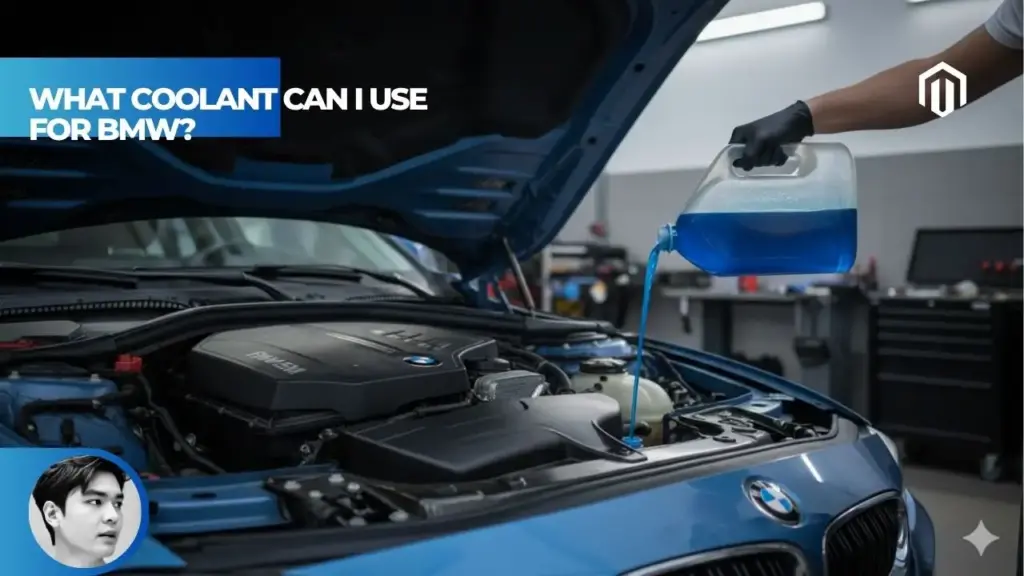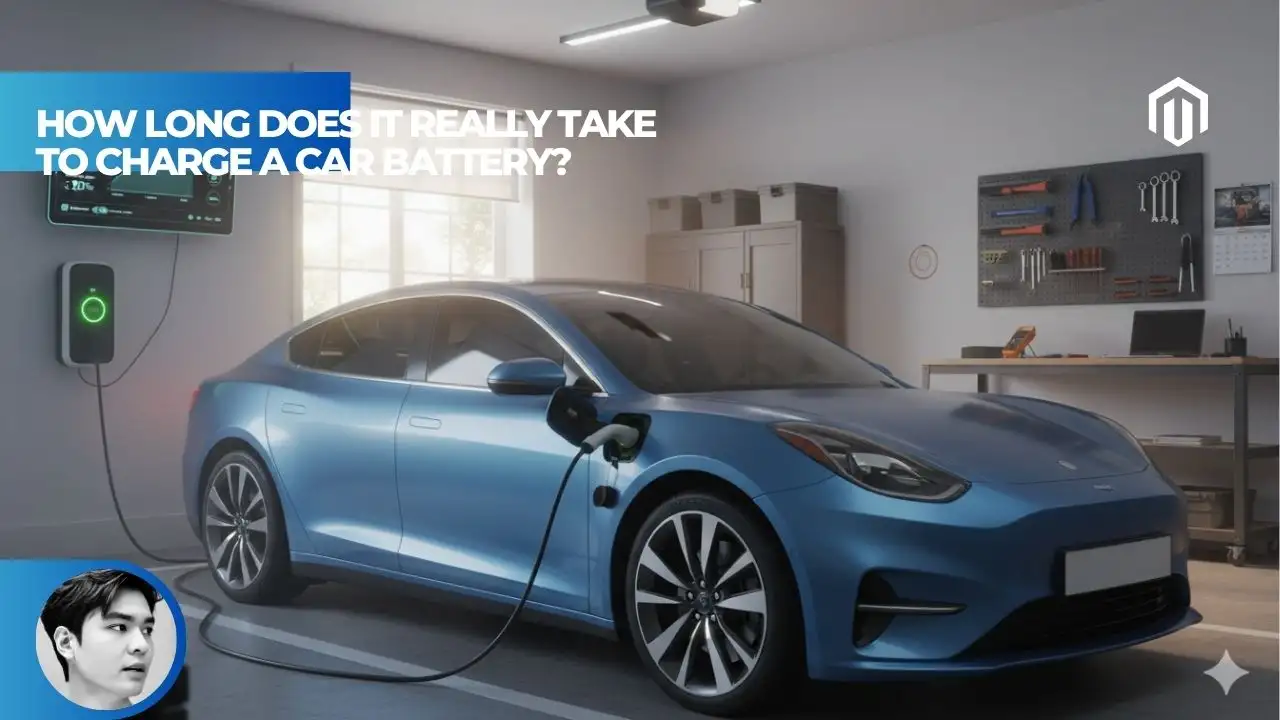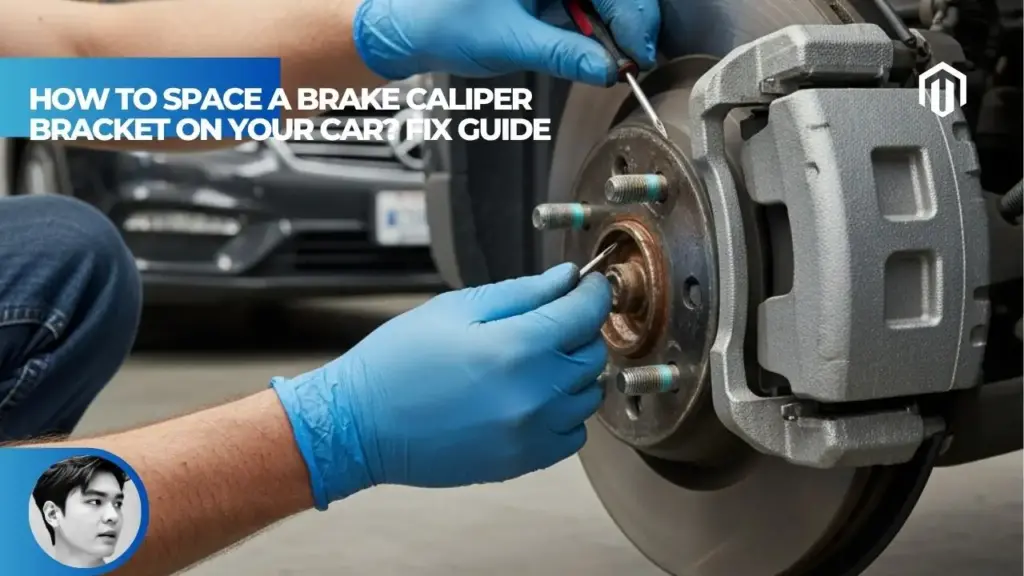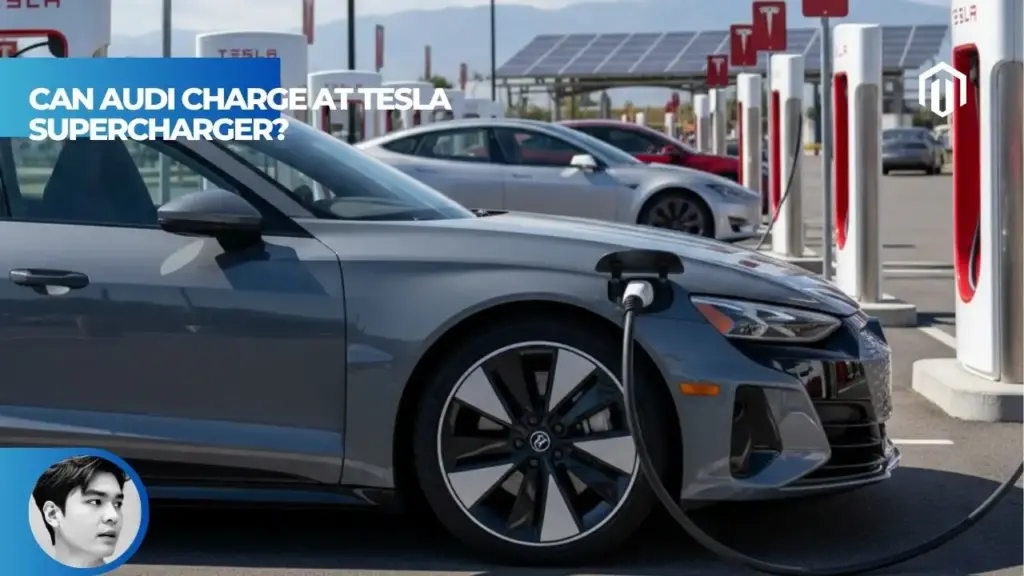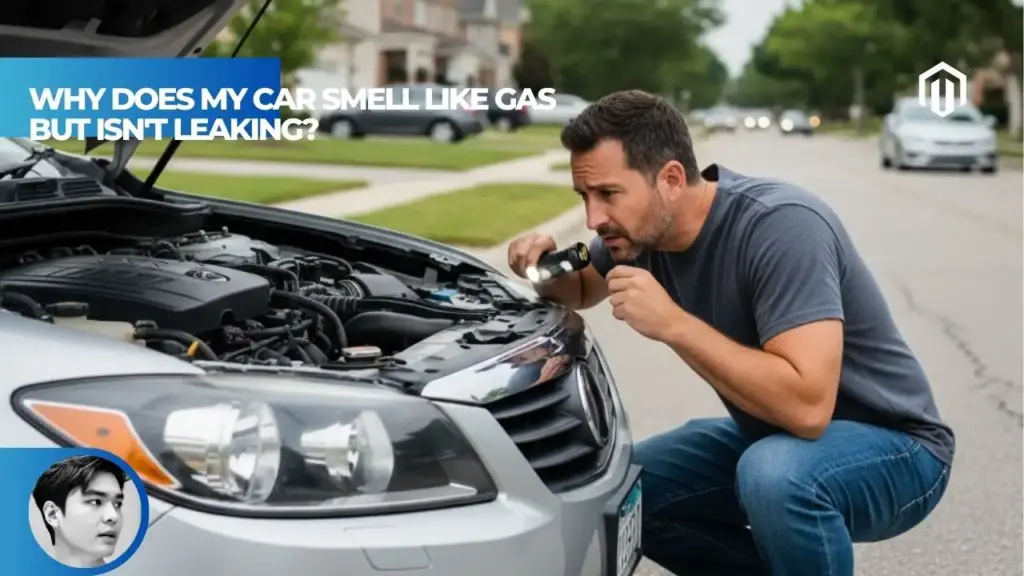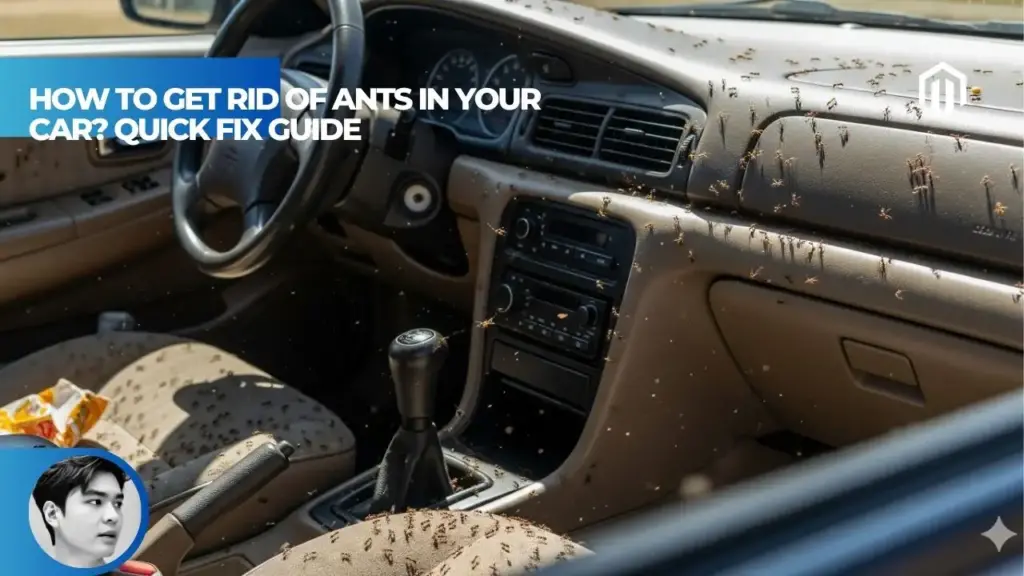You may also like:
- 【Explained】How Can You Tell If Your Car Is Overheating? A Quick Guide to Spotting the First Signs
- 【Explained】How Long Does It Take a Car to Cool Down? (The 30-Minute to 3-Hour Guide)
- 【Explained】What Did BMW Start Making Before Cars? (From Planes to Cars)
- 【Explained】Does BMW Charge for Apple CarPlay? The Full Policy Change Explained
- 【Explained】Can BMW Charge at Tesla Supercharger? The NACS Adoption Timeline Explained
BMW requires specific coolant types that vary by model year: vehicles built before 2018 use blue G48 HOAT coolant, while 2019 and newer models use green HT-12 Si-OAT coolant. These two formulations are chemically different and should never be mixed together, as combining them can cause precipitation, corrosion, and potentially catastrophic cooling system damage requiring expensive repairs.
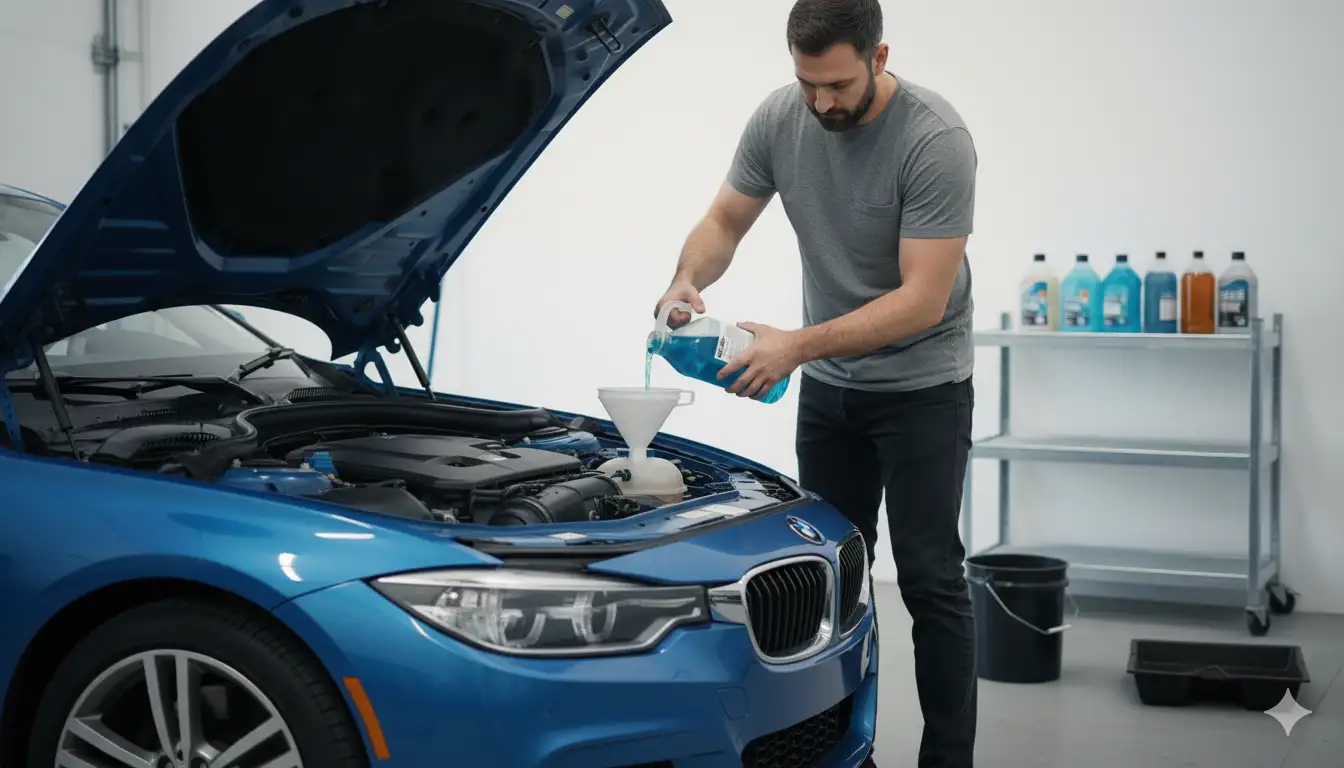
BMW Coolant Color and Type Requirements
Understanding BMW’s coolant specifications is critical for maintaining your cooling system’s integrity and avoiding costly damage to aluminum components and plastic parts.
BMW Blue Coolant (G48 Specification)
BMW’s traditional blue coolant meets the G48 specification, utilizing Hybrid Organic Acid Technology (HOAT)[1]. This formulation dominated BMW cooling systems from 2001 through 2018, providing phosphate-free and nitrate-free protection essential for aluminum engines. The blue color serves as immediate visual identification, preventing mixing with incompatible formulations.
G48 coolant contains specific organic acids and silicates that protect against corrosion while maintaining optimal heat transfer. The formula resists cavitation, crucial for water pump longevity, and maintains pH stability over extended service intervals of 4 years or 50,000 miles.
BMW Green Coolant (HT-12 Specification)
Beginning with 2019 models, BMW transitioned to green HT-12 coolant, also known as LC-18[2]. This Silicate Organic Acid Technology (Si-OAT) formulation represents BMW’s latest cooling system chemistry, offering enhanced protection for modern turbocharged engines operating at higher temperatures. The green color prevents confusion with older blue formulations.
HT-12 provides superior aluminum protection while reducing silicate dropout that can clog cooling passages. According to Autvex maintenance specialists, this newer formulation extends service life to 6 years or 100,000 miles under optimal conditions.
BMW G64 Coolant and N 600 69.0 Specification
The G64 designation occasionally appears on BMW documentation, representing an interim specification between G48 and HT-12. The N 600 69.0 specification refers to BMW’s internal testing standard that all approved coolants must meet[3]. This includes freeze protection to -37°F, boiling point elevation to 265°F with 15 psi cap pressure, and specific corrosion inhibitor requirements.
Both G48 and HT-12 meet N 600 69.0 requirements, but through different chemical pathways—hence their incompatibility.
Phosphate-Free and Nitrate-Free BMW Coolant Requirements
BMW mandates phosphate-free and nitrate-free formulations to protect cooling system components[1]. Phosphates can precipitate with hard water minerals, forming deposits that restrict flow and reduce heat transfer. Nitrates, while effective corrosion inhibitors, can damage aluminum at elevated temperatures common in BMW engines.
These restrictions eliminate most universal coolants from consideration, as many contain phosphates for cast iron protection or nitrates for diesel applications. Using non-compliant coolant voids warranties and risks premature water pump failure, radiator clogging, and head gasket deterioration.
BMW Blue vs Green Coolant Comparison
The transition from blue to green coolant represents more than a color change—it’s a fundamental shift in cooling system chemistry requiring careful management.
When Did BMW Switch from Blue to Green Coolant
BMW began the transition to green HT-12 coolant in late 2018 production, with most 2019 models receiving the new formulation from factory[2]. The changeover wasn’t immediate across all models; some early 2019 vehicles still received G48 blue coolant depending on production date and assembly plant. By 2020, all new BMWs used HT-12 exclusively.
The switch addressed evolving engine technology, particularly higher operating temperatures in turbocharged engines and the need for extended service intervals to reduce maintenance costs.
Can I Mix Blue and Green BMW Coolant
Never mix G48 blue and HT-12 green coolants[4]. While BMW states HT-12 is “backward compatible” for complete system replacement in older vehicles, this doesn’t mean they can be mixed. The different organic acid packages and silicate levels create chemical incompatibility when combined, potentially causing:
- Gel formation blocking cooling passages
- Precipitate settlement in radiator tanks
- Reduced corrosion protection
- Compromised freeze/boil protection
Small contamination during emergency top-offs may not cause immediate failure, but should prompt system flushing at earliest opportunity.
What Happens If You Mix G48 and HT-12
Mixing these incompatible coolants triggers chemical reactions producing harmful byproducts[4]. The silicate structure in each formulation differs, leading to precipitation when combined. This creates abrasive particles circulating through the cooling system, accelerating water pump seal wear and eroding thermostat components.
Laboratory testing shows mixed coolants lose 30-40% of their corrosion inhibition effectiveness within weeks. Real-world cases report cooling system failures requiring $3,000-5,000 in repairs when significant mixing occurs.
My BMW Has Green Coolant – What to Use
If your BMW contains green coolant, only use HT-12 compatible products for top-offs or service[2]. Check the expansion tank cap—newer vehicles have green caps matching the coolant color. Acceptable products include:
- Genuine BMW HT-12 (82-14-2-465-191)
- Valvoline HT-12 Green
- Pentosin Pentofrost E
- Zerex G40 (not G48)
Never add blue G48 to a system containing green HT-12, even in emergencies. Use distilled water instead if proper coolant isn’t available.
My BMW Has Blue Coolant – What to Use
Vehicles with blue coolant should continue using G48 specification products[1]. While you can perform complete system flush and conversion to HT-12, mixing is prohibited. Compatible products include:
- Genuine BMW G48 Blue (82-14-2-209-769)
- Zerex G48
- Pentosin Pentofrost NF
- Valvoline European Formula Blue
For high-mileage vehicles, maintaining original G48 specification avoids potential seal compatibility issues from formula changes.
BMW Coolant Technology Types
Understanding the chemical technology behind each coolant type explains their incompatibility and specific protection mechanisms.
HOAT Coolant for BMW (G48 Blue)
Hybrid Organic Acid Technology combines organic acids with silicate inhibitors for comprehensive protection[1]. The organic acids provide long-term corrosion protection through protective film formation on metal surfaces. Silicates offer immediate protection, particularly for aluminum components, creating a protective layer within hours of introduction.
G48 HOAT technology balances these components for 4-year service life while maintaining compatibility with older BMW cooling system materials including specific rubber compounds used in hoses manufactured before 2010.
Si-OAT Coolant for BMW (HT-12 Green)
Silicate Organic Acid Technology represents the evolution of HOAT chemistry with modified silicate structures[2]. HT-12 uses stabilized silicates that resist precipitation while maintaining aluminum protection. The organic acid package differs from G48, utilizing newer carboxylate technology for extended protection periods.
This technology better handles temperature cycling in modern turbocharged engines, maintaining stability through repeated heat/cool cycles that would degrade older formulations.
Silicate-Containing BMW Coolant Differences
The silicate content difference between formulations affects long-term stability and protection mechanisms[3]. G48 contains traditional silicates requiring stabilizers to prevent dropout, while HT-12 uses modified silicates with inherent stability. These chemical structure differences create the incompatibility—mixing produces unstable silicate compounds that precipitate rapidly.
Silicate levels also affect water pump seal compatibility, with HT-12’s formulation designed for newer seal materials that might degrade with G48’s chemistry.
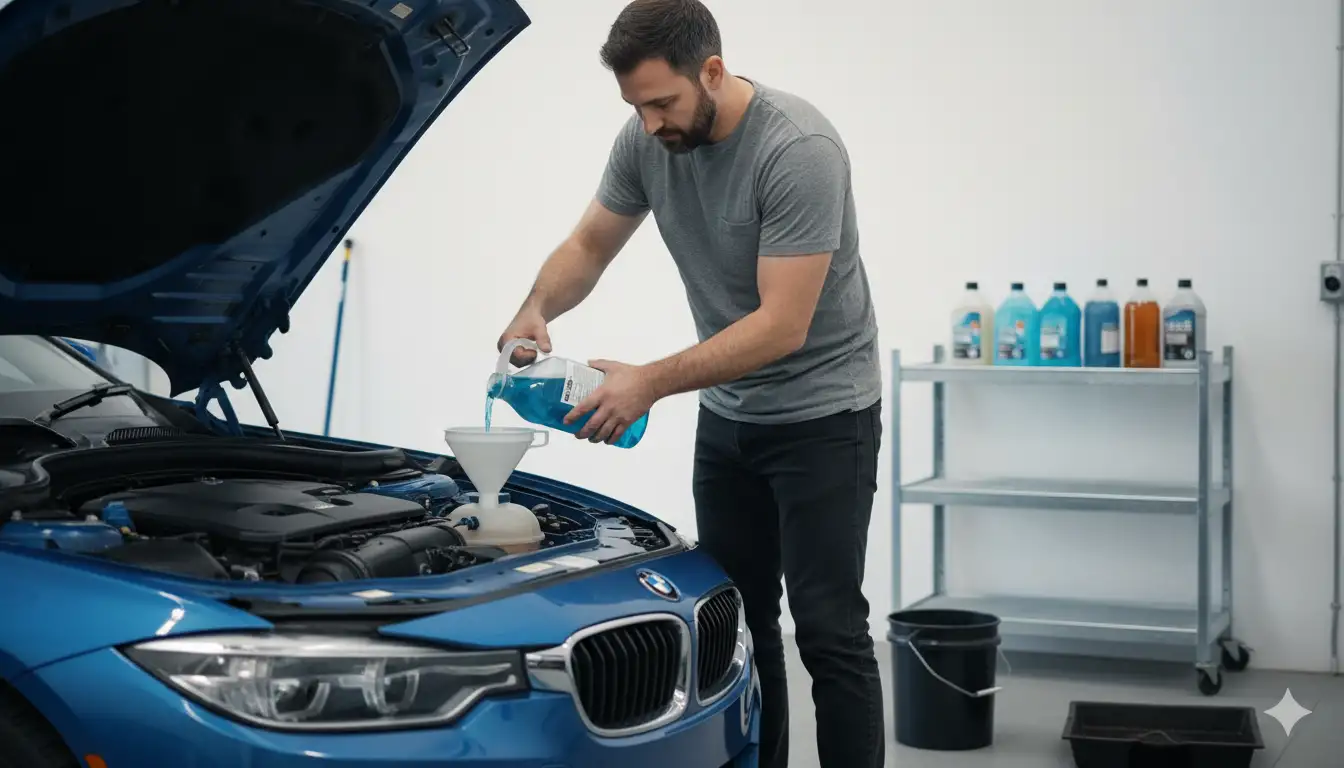
Model Year Specific Coolant Requirements
Determining correct coolant requires understanding your BMW’s production date and original factory fill specification.
Coolant for Older BMW (Pre-2018)
Pre-2018 BMWs universally use G48 blue coolant unless previously converted[1]. This includes:
- All E-chassis models (E90, E60, E70, etc.)
- Early F-chassis models (F30, F10, F15 through 2018)
- All models with N52, N54, N55, N63 engines
- Diesel models through 2018
Maintain G48 specification unless performing complete system flush with proper procedure.
Coolant for New BMW (2019+)
Models from 2019 onward require HT-12 green coolant exclusively[2]. This encompasses:
- All G-chassis models (G20, G30, G05, etc.)
- B48, B58, B46, S58, S63 engines
- All mild-hybrid and plug-in hybrid variants
- Latest diesel engines with AdBlue systems
Check coolant color before service—some transitional 2019 models may have blue coolant from factory.
BMW E90 Coolant Type
The E90 3 Series (2006-2011) uses G48 blue coolant throughout its production run. Capacity varies by engine:
- 325i/328i (N52): 8.5 liters
- 335i (N54/N55): 11.5 liters
- M3 (S65): 12.5 liters
Never use green HT-12 unless performing documented complete flush procedure.
BMW F30 Coolant Type
The F30 3 Series (2012-2019) presents a split requirement based on production date[3]. Models through 2018 use G48 blue, while late 2018 and 2019 models may have HT-12 green. Verify by checking:
- Expansion tank cap color (green = HT-12)
- Coolant color visible in reservoir
- Production date on driver’s door jamb
According to Autvex technical resources, approximately 15% of 2019 F30s received blue coolant depending on assembly location.
BMW G20 Coolant Type
All G20 3 Series (2019-present) use HT-12 green coolant exclusively[2]. This includes:
- All 330i variants (B46/B48 engines)
- M340i models (B58 engine)
- 330e plug-in hybrids
- European diesel variants
No G20 received blue coolant from factory, simplifying service requirements.
What Coolant for 2015 BMW vs 2019 BMW
The distinction is clear:
- 2015 models: G48 blue coolant without exception
- 2019 models: Predominantly HT-12 green, verify specific vehicle
This represents the transition period where verification becomes critical before service.
Aftermarket BMW Coolant Options
Quality aftermarket alternatives provide significant cost savings while maintaining BMW specifications.
Can I Use Universal Coolant in a BMW
Never use universal or “all-makes” coolant in BMW vehicles[5]. These products contain phosphates and other additives incompatible with BMW cooling systems. Universal coolants compromise:
- Aluminum corrosion protection
- Water pump seal integrity
- Coolant sensor function
- Long-term pH stability
The minor savings don’t justify potential thousands in cooling system repairs.
Can I Use Prestone Coolant in a BMW
Standard Prestone products do not meet BMW specifications due to phosphate content and incompatible additive packages[5]. While Prestone markets “European Formula” variants, these still lack proper BMW approval codes. Using non-approved coolant voids warranty coverage and risks component damage.
Prestone’s universal compatibility claims don’t account for BMW’s specific aluminum alloy compositions and seal materials.
Zerex G48 Coolant BMW Compatibility
Zerex G48 provides full BMW G48 specification compliance at lower cost than OEM products[6]. At approximately $20 per gallon versus $35 for genuine BMW, Zerex offers identical protection with same BASF base chemistry. The blue color matches OEM for easy identification.
Available at most auto parts stores, Zerex G48 eliminates dealer dependence for routine maintenance.
Pentosin Pentofrost NF (Blue) and Pentofrost E (Green)
Pentosin offers BMW-approved alternatives for both specifications:
- Pentofrost NF: Meets G48 specification for blue coolant systems
- Pentofrost E: Meets HT-12 specification for green coolant systems
Both products carry explicit BMW approval and match OEM performance[6]. European manufactured quality often exceeds repackaged products, though availability may require online ordering.
Valvoline European Blue Coolant
Valvoline’s European Formula provides G48 compliance with wide retail availability. The blue coolant meets BMW specifications while offering competitive pricing around $18 per gallon. Valvoline also produces HT-12 green coolant for newer models, simplifying brand selection across BMW fleet maintenance.
Recent formulation improvements address previous concerns about long-term stability in high-temperature applications.
Best Aftermarket Coolant for BMW
Based on availability, price, and performance, top aftermarket choices include:
| Product | Specification | Price/Gallon | Availability |
|---|---|---|---|
| Zerex G48/G40 | G48/HT-12 | $20-22 | Excellent |
| Pentosin NF/E | G48/HT-12 | $24-28 | Good |
| Valvoline European | G48/HT-12 | $18-20 | Excellent |
| Liqui Moly RAF12+ | Both | $30-35 | Limited |
BMW OEM Coolant vs Aftermarket
OEM coolant guarantees compatibility but commands premium pricing without performance advantages. Genuine BMW coolant costs $35-40 per gallon versus $18-25 for approved aftermarket alternatives. The base chemistry often comes from the same manufacturers (BASF, Arteco) with different labeling.
For warranty-period vehicles, documentation of approved coolant use maintains coverage while reducing costs.
BMW Coolant Mixing and Application
Proper mixing ratios and application procedures ensure optimal protection and system longevity.
BMW Coolant Mix Ratio and 50/50 Mix
BMW specifies a 50/50 mixture of coolant concentrate with distilled water[1]. This ratio provides:
- Freeze protection to -34°F
- Boiling protection to 265°F (with 15 psi cap)
- Optimal corrosion inhibitor concentration
- Proper heat transfer characteristics
Deviation from 50/50 compromises protection—higher concentration doesn’t improve freeze protection significantly while reducing heat transfer efficiency.
BMW Coolant Concentrate vs Premixed
Both options meet specifications with different convenience factors:
- Concentrate: Requires distilled water mixing but costs less per gallon of finished coolant
- Premixed: Ready-to-use convenience at approximately 40% higher cost
Concentrate allows ratio adjustment for extreme climates, while premixed eliminates mixing errors. For top-offs, premixed prevents dilution mistakes.
Use Distilled Water with BMW Coolant
Always use distilled or deionized water when mixing concentrate[1]. Tap water contains minerals that:
- Form deposits in cooling passages
- Reduce heat transfer efficiency
- React with corrosion inhibitors
- Accelerate water pump wear
The $1 per gallon cost of distilled water protects against thousands in potential damage.
How to Add Coolant to BMW
Proper coolant addition procedure prevents air pockets and overflow:
- Ensure engine is cold (below 90°F)
- Open expansion tank cap slowly (1/4 turn first to release pressure)
- Add coolant to “MAX” line when cold
- Start engine with cap off
- Run until thermostat opens (upper hose warm)
- Add coolant as level drops from air purging
- Install cap and run to operating temperature
- Recheck when cold, top off if needed
BMW’s self-bleeding design simplifies the process versus older models requiring specific bleed screws.
BMW Low Coolant Warning Light
The coolant warning indicates level below minimum sensor threshold[3]. Modern BMWs use float sensors in expansion tanks detecting approximately 0.5 liter below minimum. Response procedure:
- Stop safely and allow cooling
- Check for visible leaks
- Add appropriate coolant to proper level
- Monitor for recurring warnings indicating leak
Persistent warnings require immediate inspection as small leaks can rapidly escalate to catastrophic failures.
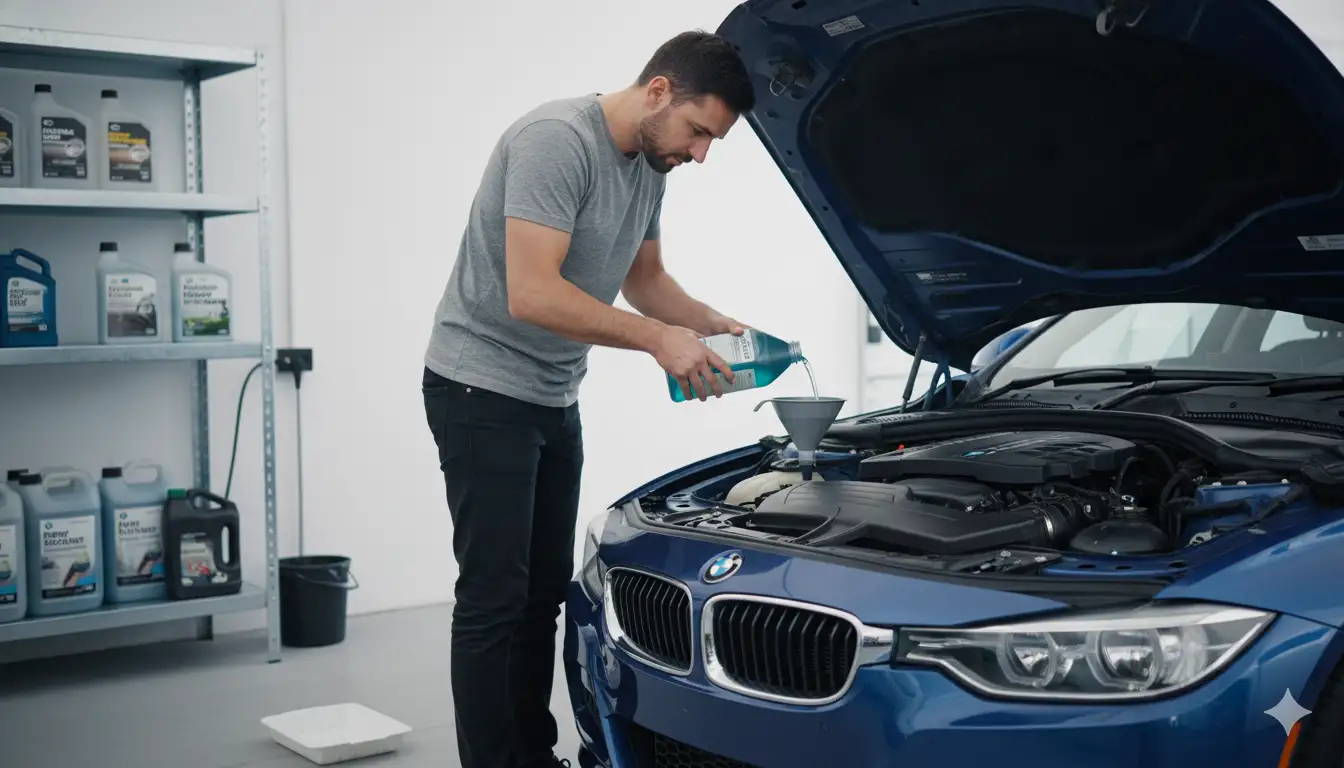
Key Takeaway
BMW requires specific coolant types based on model year: pre-2018 models use blue G48 HOAT coolant while 2019+ models use green HT-12 Si-OAT coolant, and these two types should never be mixed. Always verify your BMW’s original coolant type and use only phosphate-free, nitrate-free formulations meeting BMW specifications.
Key Points:
- Blue G48 for pre-2018, green HT-12 for 2019+ models
- Never mix blue and green coolants—incompatible chemistries
- Universal coolants don’t meet BMW specifications
- Quality aftermarket options available (Zerex, Pentosin, Valvoline)
- Always use 50/50 mix with distilled water
- Check expansion tank cap color for quick identification
- Complete flush required to change coolant types
Next Steps
Check your coolant reservoir cap or owner’s manual to identify your current coolant color—green cap indicates HT-12, blue or black cap suggests G48. Purchase coolant explicitly stating BMW G48 or HT-12 approval on the label, avoiding universal products. If switching coolant types, perform a complete system flush including block drains and heater core.
For uncertainty about coolant type or mixing concerns, consult a BMW specialist or dealer for model-specific requirements. Consider purchasing both coolant types if you own multiple BMWs from different years. Schedule coolant changes every 4 years for G48 systems or 6 years for HT-12 systems regardless of mileage.
Monitor coolant level monthly and address any drops immediately to prevent costly engine damage. Keep appropriate coolant in your garage for emergency top-offs, storing unopened containers for up to 5 years.
Frequently Asked Questions
What is the correct coolant for my BMW?
Check your model year: pre-2018 BMWs use blue G48 coolant, 2019+ models use green HT-12. Verify by checking reservoir cap color.
Is BMW coolant blue or green?
Both exist—blue G48 for older models (pre-2018), green HT-12 for newer models (2019+). Color indicates different chemical formulations.
What happens if I put the wrong coolant in my BMW?
Can cause corrosion, damage aluminum components, void warranty, and potentially lead to cooling system failure requiring expensive repairs.
Can I use universal or “all makes” coolant in my BMW?
No, BMW requires specific phosphate-free and nitrate-free formulations. Universal coolants lack proper additives for BMW aluminum engines.
What is the difference between BMW G48 (blue) and HT-12 (green) coolant?
G48 is HOAT technology for pre-2018 models; HT-12 is newer Si-OAT technology for 2019+ models with enhanced protection.
Can I mix the blue and green BMW coolants?
No, never mix G48 blue and HT-12 green. They have incompatible chemistries that can cause precipitation and system damage.
When did BMW switch from blue to green coolant?
BMW transitioned around 2018-2019 model years, with most 2019+ vehicles using green HT-12 coolant from factory.
What aftermarket coolant is approved for BMW?
Zerex G48/G40, Pentosin Pentofrost NF (blue) or E (green), and Valvoline European formulas meeting BMW specifications.
Is Zerex G48 the same as BMW blue coolant?
Yes, Zerex G48 meets BMW G48 specification and is chemically equivalent to OEM blue coolant.
Is Pentosin Pentofrost NF the same as BMW blue coolant?
Yes, Pentofrost NF meets BMW G48 specification for blue coolant compatibility.
What coolant does a BMW 328i take?
Depends on year: E90 328i (2007-2013) uses blue G48; F30 328i (2012-2016) uses blue G48; G20 (2019+) uses green HT-12.
Do I need to mix BMW coolant with distilled water?
If using concentrate, mix 50/50 with distilled water. Premixed coolant is ready to use.
What is BMW HT-12 coolant?
HT-12 is BMW’s newer green Si-OAT coolant specification for 2019+ models, backward compatible with G48 systems after complete flush.
References
- BMW AG. (2018). Technical Service Bulletin: Coolant Specifications G48. BMW Group Technical Information System.
- Valvoline Global. (2025). HT-12 Antifreeze Coolant Green BMW LC-18 Specification. https://www.valvolineglobal.com/en-eur/ht12-green/
- BimmerWorld. (2024). BMW Coolant Specifications and Applications. https://www.bimmerworld.com/Fluids/BMW-Coolant-Antifreeze/
- BMW Technical Forum. (2024). Mixing G48 and HT-12 Coolant Analysis. https://f30.bimmerpost.com/forums/showthread.php?t=2152353
- BMW CCA. (2023). Approved Coolant List and Universal Coolant Warning. BMW Car Club of America Technical Resources.
- Zerex Technical Data. (2024). G48 Coolant BMW Specification Compliance. Valvoline Inc. Technical Documentation.

I am a senior automotive analyst at Autvex. Expert vehicle evaluations, in-depth reviews, and objective analysis helping readers make informed automotive decisions with years of industry experience.

